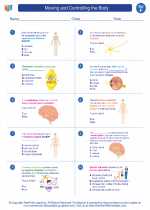Enzymes
Enzymes are biological molecules (typically proteins) that act as catalysts and help to speed up chemical reactions in living organisms. They are crucial for various biological processes, including digestion, metabolism, and cellular respiration.
Structure of Enzymes
Enzymes have a specific three-dimensional shape that allows them to bind to specific molecules called substrates. This binding site is known as the active site, where the catalytic reaction occurs. The specificity of enzymes for their substrates is often compared to a lock and key mechanism, where only the correct key (substrate) can fit into the lock (active site) of the enzyme.
Enzyme Action
Enzymes lower the activation energy required for a chemical reaction to occur, thus increasing the rate of the reaction. This process does not alter the enzyme itself and allows it to be reused for the same reaction with other substrates.
Factors Affecting Enzyme Activity
Several factors can affect the activity of enzymes, including temperature, pH, substrate concentration, and the presence of inhibitors or activators. Optimal conditions for enzyme activity vary depending on the specific enzyme and its biological environment.
Enzyme Classification
Enzymes are classified based on the type of reaction they catalyze. Some common enzyme classifications include hydrolases, oxidoreductases, transferases, isomerases, and ligases.
Study Guide
- What are enzymes and what is their role in living organisms?
- Describe the structure of enzymes and the significance of the active site.
- Explain how enzymes function as catalysts in biological reactions.
- Discuss the factors that can affect enzyme activity.
- Provide examples of different types of enzymes and the reactions they catalyze.
◂Science Worksheets and Study Guides Sixth Grade. Moving and Controlling the Body

 Worksheet/Answer key
Worksheet/Answer key
 Worksheet/Answer key
Worksheet/Answer key
 Vocabulary/Answer key
Vocabulary/Answer key
 Vocabulary/Answer key
Vocabulary/Answer key
 Vocabulary/Answer key
Vocabulary/Answer key
